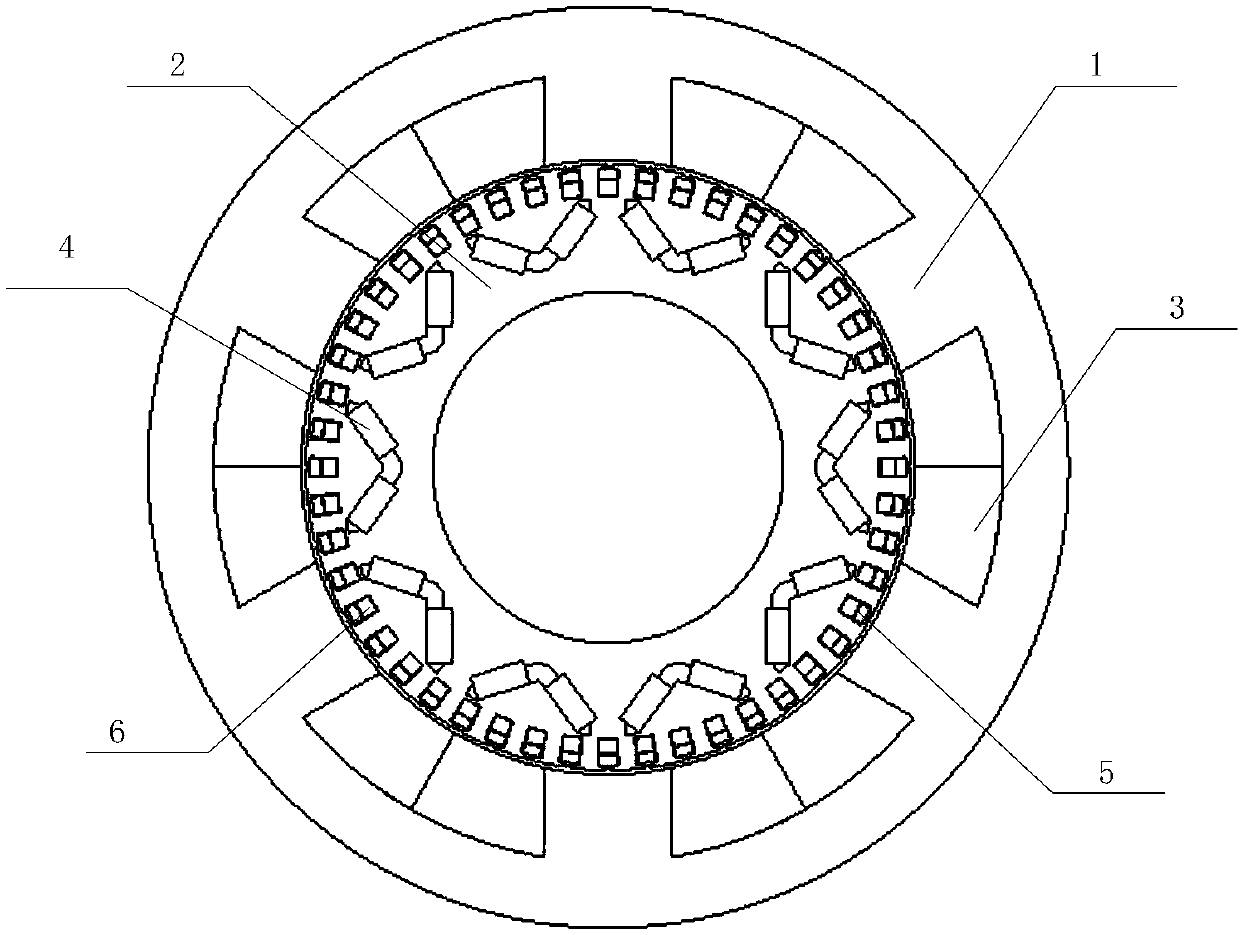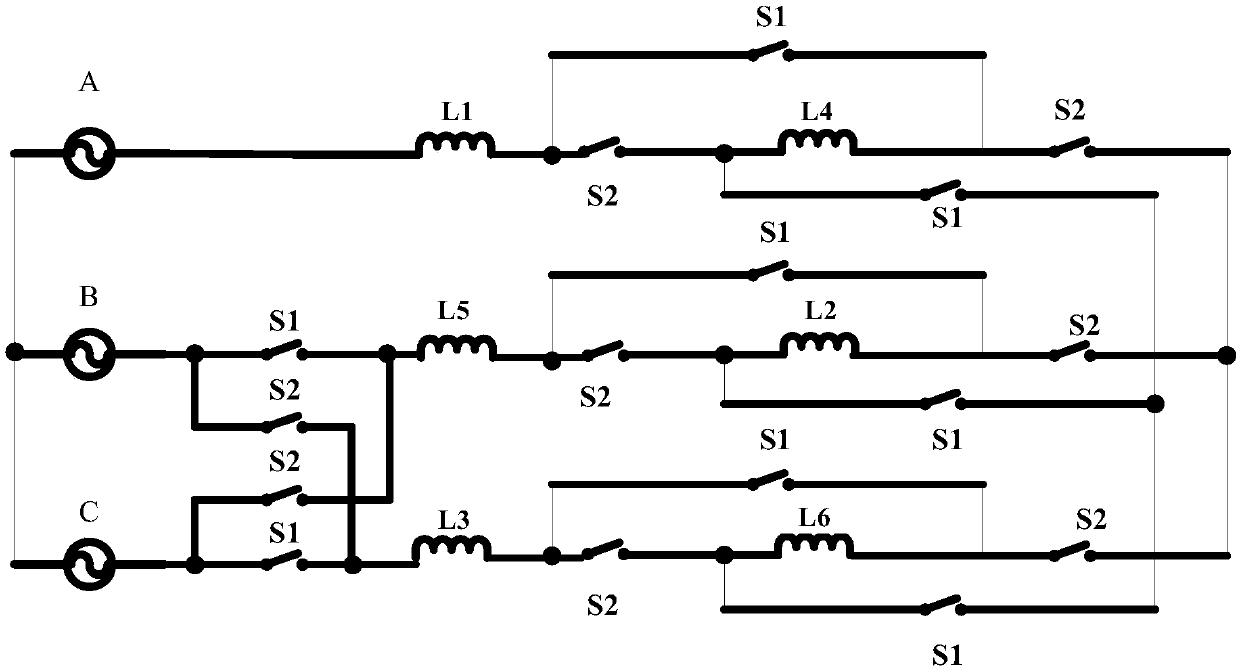Rotor double-winding pole-changing asynchronous starting vernier motor
A technology for asynchronous starting and vernier motors, which is applied to the rotating parts of the magnetic circuit, the shape/style/structure of winding conductors, and electromechanical devices, etc. It can solve the problems that the starting performance and steady-state performance of asynchronous starting vernier motors cannot be balanced, and achieve Increased torque density, high efficiency, and steady-state performance
- Summary
- Abstract
- Description
- Claims
- Application Information
AI Technical Summary
Problems solved by technology
Method used
Image
Examples
Embodiment Construction
[0021] In order to make the object, technical solution and advantages of the present invention clearer, the present invention will be further described in detail below in conjunction with the accompanying drawings and embodiments. It should be understood that the specific embodiments described here are only used to explain the present invention, not to limit the present invention.
[0022] The invention provides a pole-changing asynchronous starter vernier motor with double windings on the rotor, such as figure 1 As shown, it includes a stator and a rotor; wherein, the stator includes a stator core 1 and a stator winding 3 , and the rotor includes a rotor core 2 , a rotor damping winding 5 , a rotor starting winding 6 and a permanent magnet 4 .
[0023] The stator core 1 is in the shape of a ring, and its inner ring surface is provided with a plurality of open slots as stator slots along the circumferential direction to accommodate the stator winding 3; the rotor core 2 is coa...
PUM
 Login to View More
Login to View More Abstract
Description
Claims
Application Information
 Login to View More
Login to View More - R&D
- Intellectual Property
- Life Sciences
- Materials
- Tech Scout
- Unparalleled Data Quality
- Higher Quality Content
- 60% Fewer Hallucinations
Browse by: Latest US Patents, China's latest patents, Technical Efficacy Thesaurus, Application Domain, Technology Topic, Popular Technical Reports.
© 2025 PatSnap. All rights reserved.Legal|Privacy policy|Modern Slavery Act Transparency Statement|Sitemap|About US| Contact US: help@patsnap.com


